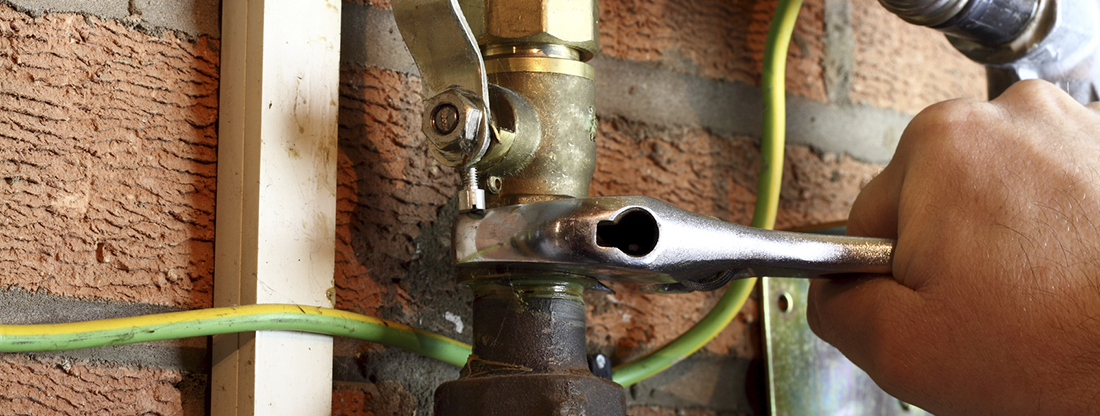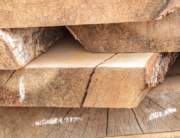Nobody ever cheers at the thought of tackling home repairs. They’re annoying, costly, time-sucking endeavors. So often we put them off, over and over, justifying to ourselves that they can wait. Light switch doesn’t work? Whatever—you never go in that room anyway. Squeaky floors? You’re already used to them!
But there are some home improvement projects that simply can’t wait, lest you risk much bigger problems (and costly expenses) down the line. Here are 12 home repairs experts say you should never put off:
1. A leaking roof
If you see water stains on your ceiling or down your walls, get moving on the repair stat—there are a host of problems that can arise and get progressively worse with a leaking roof.
“Not repairing a leak as soon as you notice it can lead to mold, damage to the structure of your home, water damage, and even fire if water comes in contact with electrical wiring,” says Carlos de León, vice president of the León Group, an estate management company on Long Island, NY. Scared yet? Good.
2. Damaged or missing shingles
This one seems obvious, but Derek Perzylo, owner of Big 5 Exteriors in Calgary, Canada, says he regularly encounters homeowners who have never had their roof inspected.
“After a big storm, especially if there’s a lot of gusting wind and hail, it’s always a good idea to visually inspect your roof,” he says. “If you see shingles out of place, or if you see shingles on the ground, you might have some damage that could cause potential problems, like leaks, down the road.”
3. Sagging roof
Roof sagging can be caused by moisture in the attic space, says Joe Todaro, director of operations at Gold Medal Service in East Brunswick, NJ. If left untreated, the structure of the wood will weaken and settle, causing cracks in the exterior walls. Proper ventilation is essential for an attic.
4. Cracks in the foundation
Your home’s foundation may develop small cracks over time, and it’s best to address them to prevent spreading. Otherwise you might have to replace the foundation, which can cost as much as $100,000. Large cracks that go unaddressed can lead to everything from leaking to parts of the concrete collapsing.
“The damage could be life-threatening if your home is not supported properly,” León says.
5. Gas leaks
Since natural gas and propane are heavier than air, they “pool” in the low points of your home. The second you smell gas (a telltale rotten egg–like smell), call your gas company and vacate the premises until a company worker arrives.
“You risk having an explosion or fire by not doing something about a gas leak immediately,” León says.
6. Plumbing leaks
Leaking water can lead to mold, structural problems, and health issues. Homeowners should check under sinks at least once a year to ensure no water is leaking into the cabinets. If you see any, call a plumber right away.
7. Mold
Is there good mold and bad mold? Not really. When you see it, deal with it. And simply having a “mold remediation” company come in to assess things is not the entire answer, says Jeff Wilson, HGTV host and author of “The Greened House Effect.”
“The reason the mold formed in the first place needs to be sussed out and the problem fixed by a building science professional trained by an organization like Building Performance Institute,” he says.
So just to be clear: While not all molds are life-threatening, all of them—even the ubiquitous shower mold—can potentially make you sick. So it’s best to be aggressive no matter what kind you see.
8. Overtaxed or poor electrical systems
More than 40,000 electrical fires occur each year in the United States. And most of them could have been easily avoided. Some warning signs of faulty electrical work include circuit breakers blowing unexpectedly, lights flickering, and outlets and/or switches being warm or hot to the touch. Not calling an electrician can result in your home catching fire. Got it? Call the electrician.
9. Clogged gutters
Clogged gutters are easy to ignore, but they can cause substantial damage to your home if you don’t make it your business to keep them clean.
The role of gutters and drainpipes is to draw rainfall away from the home. If they’re stopped up, water begins to pool in vulnerable areas. You’ll face a higher risk for wood rot around the fascia and for foundation damage in low, sloped areas around the perimeter of your home.
Homeowners should clean out their gutters twice a year and water test them with a garden hose afterward. Make sure the water travels easily through the gutter system, into the drainpipe, and away from the home’s foundation.
10. Cracked driveways
Most driveways are pitched to direct water away from your foundation. If there are cracks and settling in your driveway, not only are they a tripping hazard, they could also lead to possible water damage in your home.
11. Damaged decks
The No. 1 danger spot with decks is when there’s worn or missing flashing, the thin layer of material that keeps water from getting into places it doesn’t belong. Without flashing, water can get into the ledger board (which connects the deck to the house) and weaken the wood and metal fasteners that hold the deck together. And if a weakened deck is overloaded, it can have expensive—if not deadly—consequences.
12. Clogged dryer vents
Removing the lint from your dryer vent isn’t just one of those things your mama nagged you to do. It could mean the difference between life and death.
“It’s not a big project by any means,” says Aaron Rovner, vice president of business development at ServiceWhale in Trevose, PA. “But if you allow lint and other fabric to sit in a dryer vent, it will ultimately cause an airflow and exhaust backup that will turn into a major fire hazard.”
So you have your work cut out for you. The good news is that you don’t have to do many of these repairs frequently. But when you see warning signs, get going pronto—or risk bigger problems down the road.
This article was originally published at Realtor.com.






